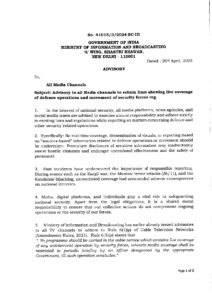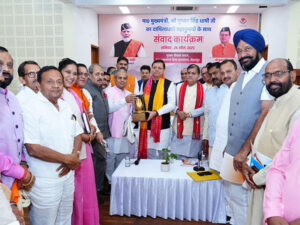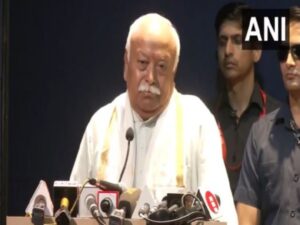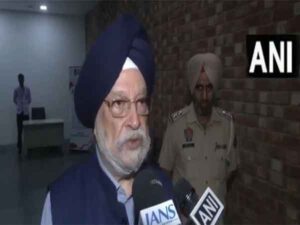Assam’s Byrnihat tops global pollution list; Delhi most polluted capital: Report
New Delhi, Mar 11 (PTI) Thirteen of the world’s 20 most polluted cities are in India, with Byrnihat in Assam topping the list, according to a new report published on Tuesday.
The World Air Quality Report 2024 by Swiss air quality technology company IQAir said Delhi remains the most polluted capital city globally, while India ranked as the world’s fifth most polluted country in 2024, marking an improvement from its third rank in 2023.
Four cities in neighbouring Pakistan and one in China are among the world’s top 20 polluted cities.
The report said India saw a 7 per cent decline in PM2.5 concentrations in 2024, averaging 50.6 micrograms per cubic metre, compared to 54.4 micrograms per cubic metre in 2023.
Yet, 13 of the world’s 20 most polluted cities are in India.
The air pollution in Delhi has worsened, with the annual average PM2.5 concentration rising from 102.4 micrograms per cubic metre in 2023 to 108.3 micrograms per cubic metre in 2024.
The Indian cities in the list of world’s top 20 most polluted cities are Byrnihat, Delhi, Punjab’s Mullanpur, Faridabad, Loni, Gurugram, Ganganagar, Greater Noida, Bhiwadi, Muzaffarnagar, Hanumangarh and Noida.
Overall, 35 per cent of the Indian cities reported annual PM2.5 levels exceeding 10 times the World Health Organization (WHO) limit of 5 micrograms per cubic metre, the report said.
The high level of pollution in Byrnihat, a town on the Assam-Meghalaya border, is due to emissions from local factories, including distilleries, iron and steel plants.
Delhi grapples with high air pollution year-round and the problem worsens in winter when unfavourable meteorological conditions, combined with vehicular emissions, paddy-straw burning, firecrackers and other local pollution sources, make the air quality hazardous.
Air pollution remains a serious health risk in India, reducing life expectancy by an estimated 5.2 years. According to a Lancet Planetary Health study published last year, about 1.5 million deaths in India every year from 2009 to 2019 were potentially linked to long-term exposure to PM2.5 pollution.
PM2.5 refers to tiny air pollution particles smaller than 2.5 microns, which can enter the lungs and bloodstream, leading to breathing problems, heart disease and even cancer.
The sources include vehicle exhaust, industrial emissions and the burning of wood or crop waste.
Former WHO chief scientist and health ministry advisor Soumya Swaminathan said India has made progress in air quality data collection but lacks sufficient action.
“We have the data; we need action now. Some solutions are easy like replacing biomass with LPG. India already has a scheme for this, but we must further subsidise additional cylinders. The first cylinder is free, but the poorest families, especially women, should receive higher subsidies. This will improve their health and reduce outdoor air pollution,” she told PTI in an interview.
In cities, expanding public transport and imposing fines on certain cars could help.
“A mix of incentives and penalties is necessary,” she said.
“Finally, strict enforcement of emission laws is crucial. Industries and construction sites must comply with regulations and install equipment to cut emissions instead of taking shortcuts,” the former director general of the Indian Council of Medical Research (ICMR) added.
Avinash Chanchal, deputy programme director, Greenpeace South Asia, said the report once again exposed that the steps being taken under clean air action plans to control pollution in India are not sufficient.
“Numerous studies have identified emissions from road transport as one of the major contributors to PM2.5 concentrations in our cities. However, the government has failed to strengthen the public transport system.
“It lacks dedicated funding and cities are struggling to add new bus fleets, build efficient public transport infrastructure and ensure first and last-mile connectivity,” he said.
Chanchal also said the government must commit to mobility as a right, not a commodity, by creating a dedicated public transport fund.
This fund should ensure investments in public buses, fare subsidies and the expansion of rapid mass transit systems, he said.
Vivek Agarwal, global policy expert and country director, Tony Blair Institute for Global Change, said despite numerous interventions, pollution in cities like Delhi remains intractable due to siloed regulatory environment, poor data collection and “political short-termism”.
“The regulatory institutions are fragmented. Pollution is a regional problem, but enforcement is left to individual state pollution control boards with little capacity to regulate or curb emissions effectively.
“Data on pollution remains unreliable, shielding violators from being identified and held accountable. This results in excessive focus on visible suspects like crop burning rather than silent year-long contributors like old polluting trucks,” he said.
The crisis is further exacerbated by a myopic policy focus.
Measures like the odd-even scheme serve as political theatre but fail to address systemic drivers like vehicular pollution and construction dust. What cities like Delhi need is not more stopgap measures but a centralised, well-funded regulatory overhaul, Agarwal said.






